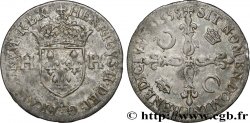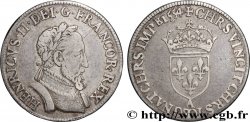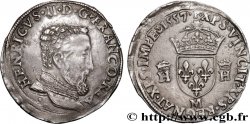Live auction - bry_866744 - HENRY II Demi-teston du Dauphiné à la tête nue 1557 Grenoble
You must signin and be an approved bidder to bid, LOGIN TO BID. Accounts are subject to approval and the approval process takes place within 48 hours. Do not wait until the day a sale closes to register. Clicking on "BID" constitutes acceptance of the terms of use of cgb.fr private live auctions.
Bids must be placed in whole Euro amounts only. The sale will start closing at the time stated on the item description; any bids received at the site after the closing time will not be executed. Transmission times may vary and bids could be rejected if you wait until the last second. For further information check the Live auction FAQ
All winning bids are subject to a 18% buyer’s fee.
All winning bids are subject to a 18% buyer’s fee.
| Estimate : | 800 € |
| Price : | 350 € |
| Maximum bid : | 510 € |
| End of the sale : | 05 March 2024 16:26:30 |
| bidders : | 1 bidder |
Type : Demi-teston du Dauphiné à la tête nue
Date: 1557
Mint name / Town : Grenoble
Quantity minted : 8721
Metal : silver
Millesimal fineness : 898 ‰
Diameter : 27 mm
Orientation dies : 10 h.
Weight : 4,58 g.
Rarity : R3
Coments on the condition:
Ce demi-teston est frappé sur un flan large et irrégulier présentant des éclatements. Demi-teston légèrement bombé avec une usure assez marquée au niveau du buste du roi. Patine grise et faiblesse de frappe à droite du second quartier de l’écu de France
Obverse
Obverse legend : HENRICVS. II. DEI. G. FRANCO. REX..
Obverse description : Buste cuirassé de Henri II à droite ; (Mg) sous le buste.
Obverse translation : (Henri II, par la grâce de Dieu, roi des Francs).
Reverse
Reverse legend : (ROSE) XPS. VINCIT. XPS. REGNAT. XPS. INP. 1557 (MM).
Reverse description : Écu couronné écartelé aux 1 et 4 de France aux 2 et 3 du Dauphiné accosté de deux H couronnées ; lettre d'atelier à la pointe de l'écu.
Reverse translation : (Le Christ vainc, le Christ règne, le Christ commande).
Commentary
Monnaie non retrouvée dans le FRANCIÆ IV avec un demi-teston vendu dans la vente sur offres CGB Monnaies 54, n° 77.
Coin not found in FRANCIAE IV with a half-teston sold in the CGB Coins 54 auction, no. 77
Coin not found in FRANCIAE IV with a half-teston sold in the CGB Coins 54 auction, no. 77







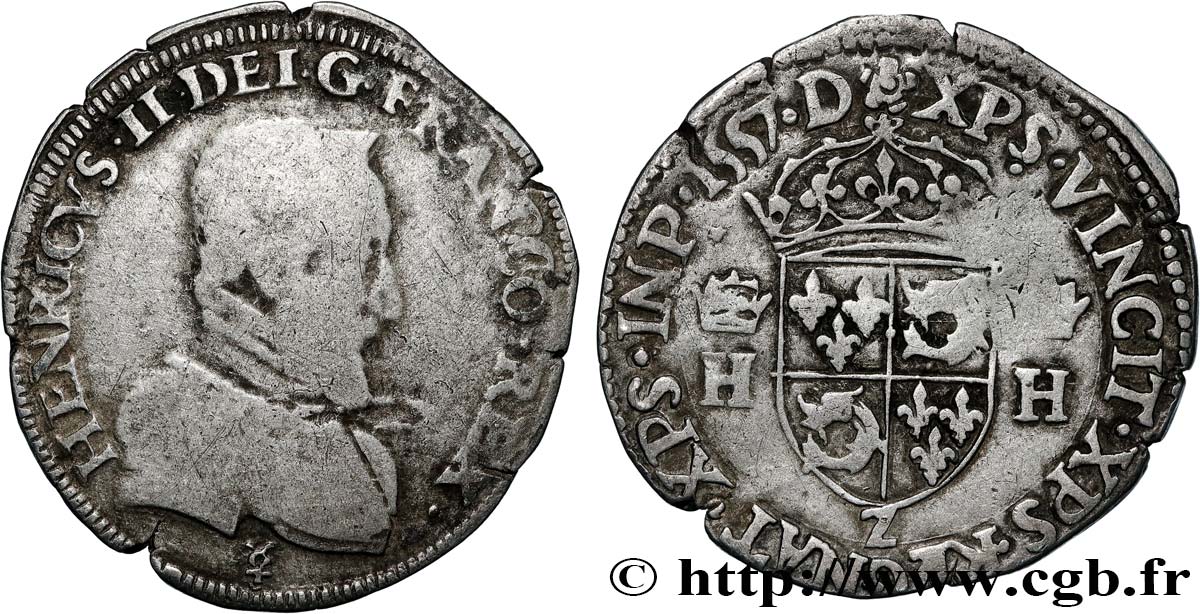
 Report a mistake
Report a mistake Print the page
Print the page Share my selection
Share my selection Ask a question
Ask a question Consign / sell
Consign / sell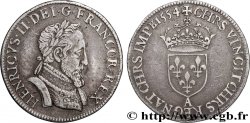
 Full data
Full data
